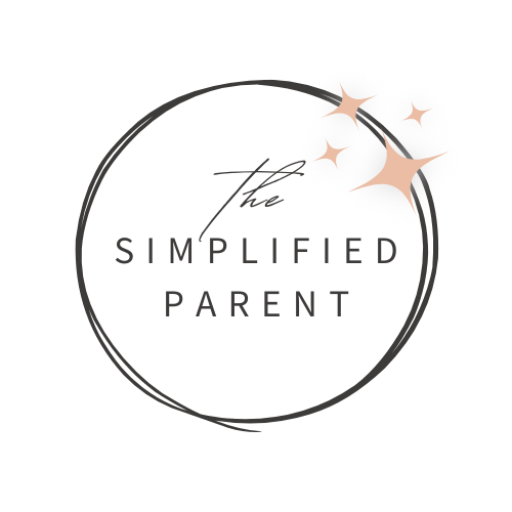I have been thinking about and looking forward to writing this post for a while. I absolutely love having my kids engage in sensory play and find it to be extremely valuable both as an educator and a parent. In the following post, I will discuss:
- What is sensory play?
- Why is sensory play important?
- When can I start sensory play?
- How do I provide sensory play for my child?
- My favorite sensory play ideas
- Children that have sensory sensitivities
It is important to note that I am not an expert or medical professional. Conversely, the information I share here is based on my own experiences as an educator and parent.
Disclaimer: This post contains affiliate links. When you click these links, I may get a small commission. It won’t cost you anything, but it helps me to run this site. I only promote products and services that I think are great. Having been an educator for over a decade and a parent myself, I use my experience to judge whether a product is worthy. So, you can be assured that I always have your best interests at heart.
What Is sensory play?
Children use their senses to make sense of the world from the day they are born. As a result, their senses are an integral part of their development. When you think about the term “sensory play,” consider anything that uses one or more of the senses. As a result, this covers pretty much all play. You can, however, be more intentional about creating sensory play opportunities that continue to develop their senses and curiosity about the world. That is what this post is about.
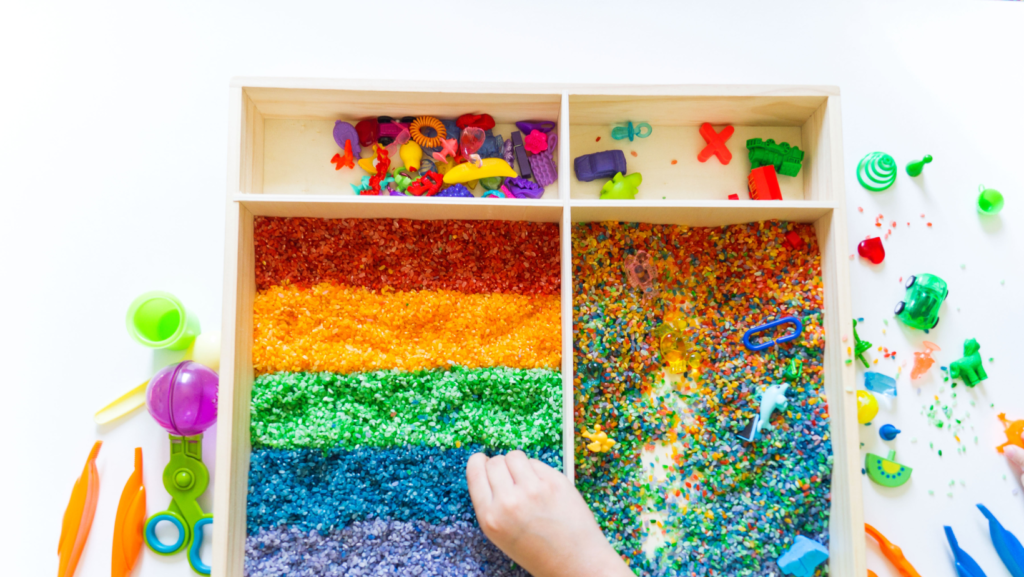
Why is sensory play important?
Sensory play has so many benefits for children. For example, sensory play:
- Builds additional connections in the brain – when children explore, their brain develops additional connections.
- Helps children explore and as a result, better understand the world around them. Furthermore, as they explore these things, they are developing memories and opinions about the things they interact with.
- Develops language, especially when a parent or adult engages with them.
- Provides opportunities to develop fine motor skills, which can help later on with things like writing and cutting.
- Encourages independent thinking as well as creativity.
- Also helps children develop an understanding of cause and effect as they notice and explore how their actions impact the world around them.
- Supports emotional regulation by also having calming properties.

When can I start sensory play?
Generally, all ages of children benefit from sensory play! Children are born exploring the world with their senses, so it is very natural for children of all ages. Therefore, I strongly suggest starting as early as possible especially since most sensory activities can be adapted to meet various age levels. For example, if you want to create a sensory activity involving music, you could let your baby play with various rattles, your toddler could bang on a variety of pots and pans from your kitchen, and older kids could make their own musical instruments.
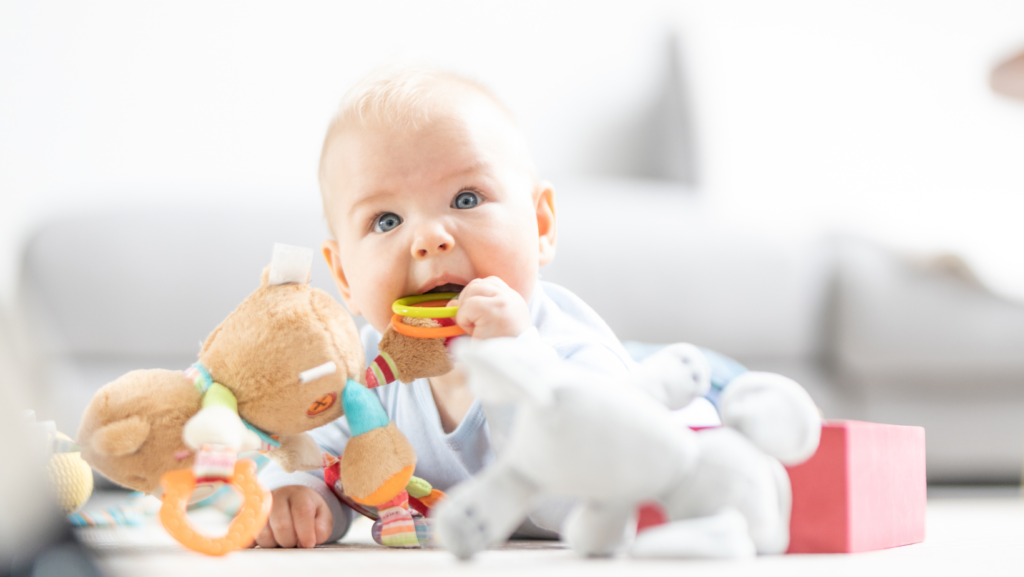
How do I provide sensory play for my child?
Most activities that you engage in with your child fall into the sensory play category. When we refer to sensory play, we are referring to intentionally finding ways to engage your child’s senses and letting them explore with their senses.
When it comes to developing additional sensory play activities, there are a few things to think about. As you think about a sensory activity, consider how you can engage all five of the senses. Also, think through how to develop your child’s language by how you discuss and describe things. Additionally, be sure to incorporate fine motor development. This means having opportunities for them to pinch and grab smaller items, as well as pour and lace things. A sensory kit such as this one is a great place to start!
My favorite Sensory Play Activities
I have a few go-to activities when it comes to sensory play: sensory bins, sensory bags, sensory bottles, water play, bubbles, gross motor activities, and crafts.
Sensory Bins
One of my favorite and go-to sensory play activity is a sensory bin. We actually have a plastic bin in our house that is only used for sensory bins. I love sensory bins because they are so versatile. First you should think of a theme for the bin. Then collect materials related to that theme, add in something that kids can pour/scoop, and finally things they can use to pinch. I also love this fine motor kit for pinching. For example, check out some of the sensory bins I’ve created in the past in the pictures below. I also wrote a whole post about sensory bins you can check out.
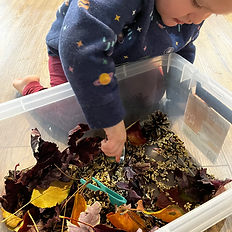
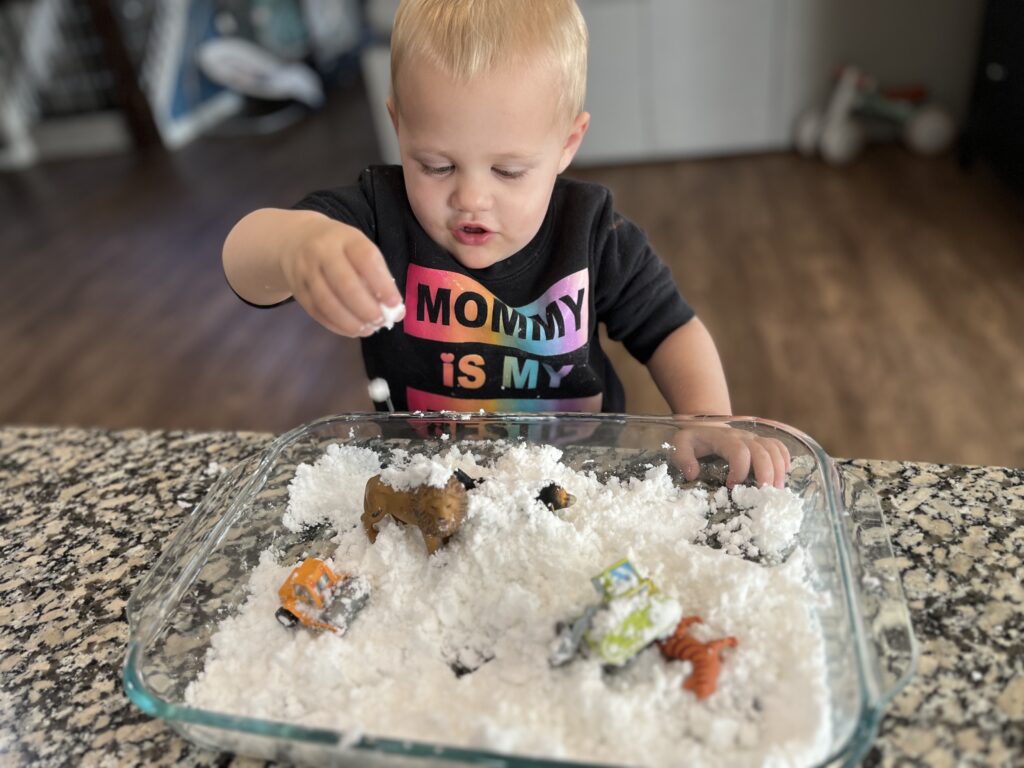
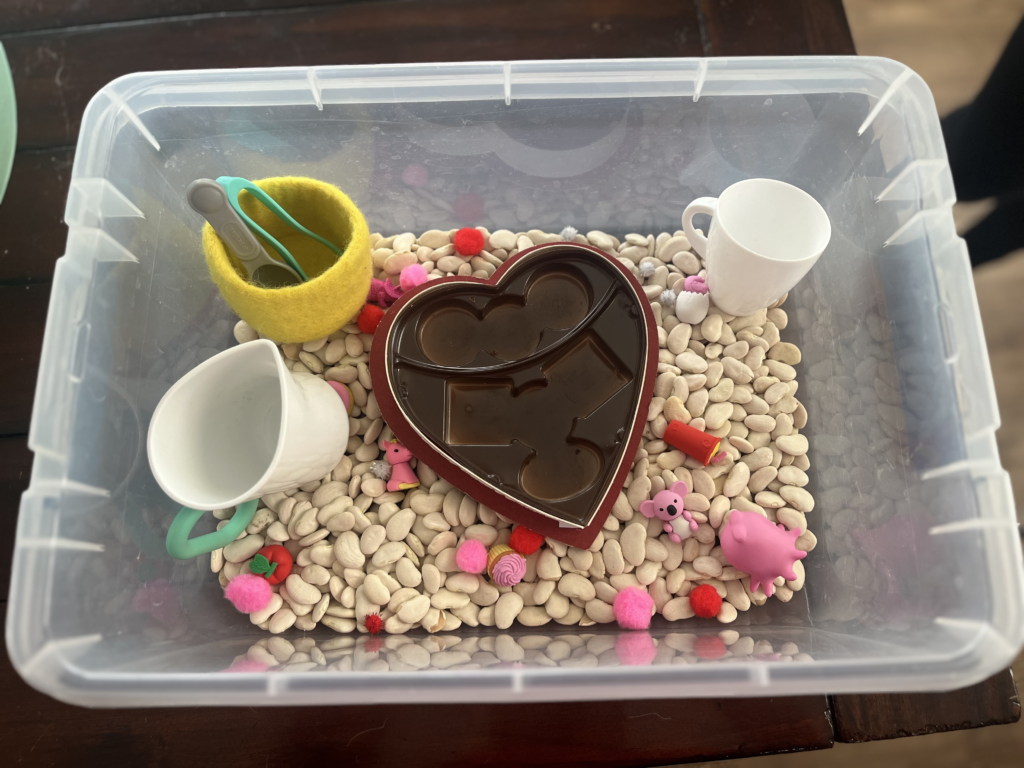
Sensory Bags
Sensory bags are similar to sensory bins, just contained in a bag. This makes them much easier to contain the mess, while also letting kids continue to explore using their senses. When I make sensory bags, I always try to have something for them to push around, typically suspended in some sort of liquid. For example, these liquids can be something thin like water, or a little thicker like gel or vegetable glycerin (an ingredient that’s also useful in sensory bottles discussed below). Another tip I have is to tape the bags closed to ensure the contents stay inside of it and not all over your floor!
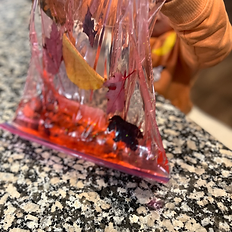
Sensory Bottles
Sensory bottles combine various sensory materials into bottle form (I like to use these bottles). With sensory bottles, kids can explore various visual stimulations, as well as sound. For example, check out some sensory bottles I have made for my kids.
Water Play
Another great sensory activity is water play. Examples include both water tables and even baths. One way to up the sensory aspect of these activities is to let your child explore with a variety of containers to scoop and pour with. Additionally, it adds a bonus if some of the containers have holes and don’t actually hold water! I also really love this Lovevery sink that comes in their play kits.
Bubbles
Another of my favorite sensory activities is bubbles. On one hand, this can be as simple as letting your kids explore blowing bubbles with a variety of bubble wands. Conversely, you can make it more complex by trying out different bubble recipes. Therefore, bubbles are a great activity that you can differentiate for any age of child. For example, babies love watching and feeling bubbles, toddlers love to pop them, and older kids love exploring different ways of blowing bubbles!
This past summer, we discovered bubble foam, as a result it’s become a new favorite of ours. All you do is put about an inch of water into a box, add dish soap, then whip it with a handheld mixer until you have a bunch of foam. Our kids absolutely loved it and it’s the cleanest mess you’ll ever have!
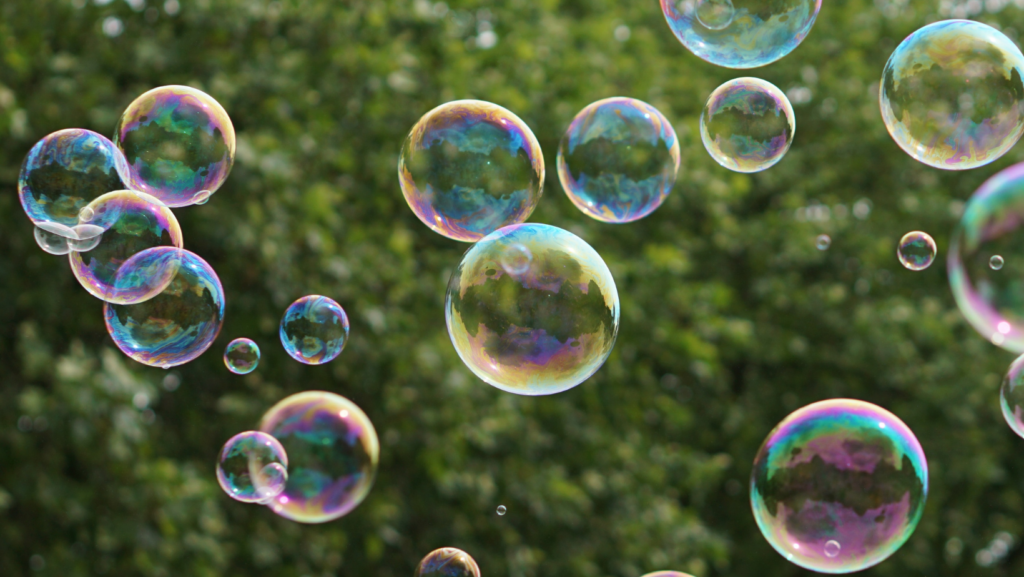
Crafts
The final category of activities to consider for sensory play is crafting. Particularly, most crafts you make with your kids are sensory play. For example, you can make musical instruments to explore the sense of hearing. Additionally, painting and mixing colors engages the vision sense. Finally, utilizing a variety of materials taps into tactical senses. If you want some good ideas for crafts to make, check out my other blog posts, especially my Valentine’s Day posts.
Educational Idea: One of the most important aspects of providing quality sensory play for your child is to use it as an opportunity to develop their language. For example, when you are painting with your child, discuss what happens when you mix colors as well as various shades. When we consider colors, there are many variants. For example, green can be lime, moss, mint, seafoam, etc.
Children that have sensory sensitivities
One important quick note I wanted to make is about children who have sensory sensitivities. When I refer to children with sensory sensitivities, these are often children on the autism spectrum and/or who are easily over-stimulated. To clarify, having a sensory sensitivity does not mean they cannot engage in or benefit from sensory play. Of course, this all depends on the child. On one hand, for some children you may want to reduce the amount of sensory input with one of these activities. For example, reducing the number of different textures you include in a sensory bin. On the other hand, some kids will be totally fine with having multiple senses engaged.
As a reminder, I am not a medical professional, but am simply sharing my own experiences as an educator and parent.
Let’s Wrap It Up
In conclusion, I hope you are now more confident in understanding what sensory play includes and your ability to make activities for your kids. Try some of them out and comment below to let me know how it went!
Here is a consolidated list of the materials I reference in this post:
Did you find this useful?
Check out more of my ideas and resources!
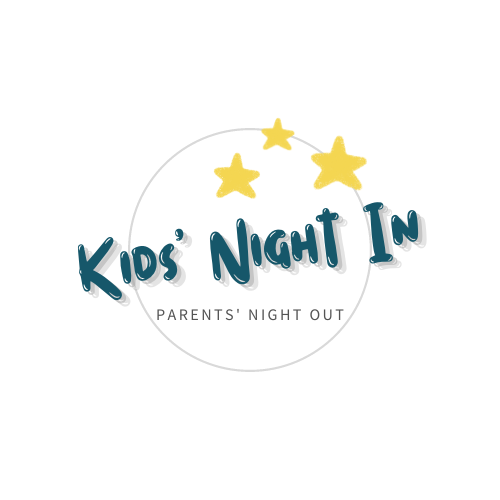
This blog came out of the work I did with my husband to start our business Kids’ Night In. At Kids’ Night In, we provide parents with a childcare option when others are closed, including after hours, weekends, and school breaks. Check us out if you live in the Aurora, Colorado area!
